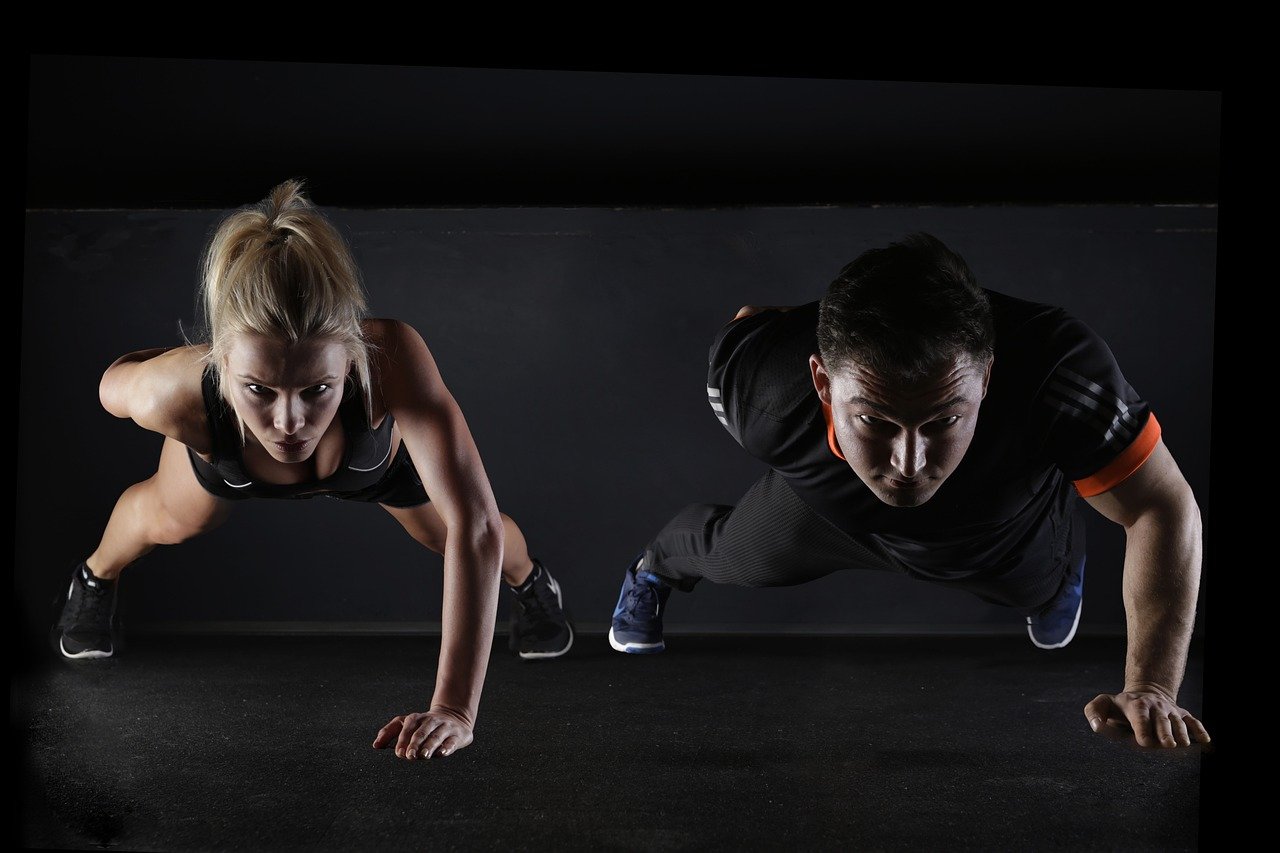
Aerobics is a flexible and dynamic exercise system that joins strength preparing and cardiovascular practices in an organized grouping. It is well known among wellness devotees and competitors for its proficiency, flexibility, and capacity to convey a full-body exercise in a short measure of time. This guide will dive into the standards of high-intensity exercise, its advantages, and how to plan an aerobics exercise customized to your wellness objectives.
What is Aerobics?
Aerobics includes a progression of activities performed consistently with negligible in the middle between. Each exercise focuses on an alternate muscle gathering or part of wellness, like strength, perseverance, or deftness. The “circuit” is finished when all activities have been performed, and the succession can be rehashed on numerous occasions relying upon the ideal power and span of the exercise.
The vital trait of high-intensity aerobics is its construction. Dissimilar to customary exercises where you could complete a few arrangements of one activity prior to continuing on toward the following, in high-intensity aerobics, you move rapidly starting with one activity then onto the next. This approach keeps your pulse raised, giving both strength preparing and cardiovascular advantages in a solitary meeting.
History of Aerobics
Aerobics was created in 1953 by R.E. Morgan and G.T. Anderson at the College of Leeds in Britain. Initially planned as a type of general molding for competitors, it immediately acquired prominence because of its viability and time productivity. Throughout the long term, high-intensity aerobics has developed, with different transformations and styles arising to suit different wellness levels and objectives.
Advantages of High-intensity aerobics
High-intensity aerobics offers various advantages, pursuing it a brilliant decision for people of all wellness levels. Here are a portion of the key benefits:
Time Productivity: High-intensity exercise permits you to finish a full-body exercise in a moderately brief period. By limiting rest between works out, you can amplify your exercise time, making it ideal for those with occupied plans.
Worked on Cardiovascular Wellbeing: The nonstop development starting with one activity then onto the next keeps your pulse raised, giving a cardiovascular exercise that further develops heart wellbeing, perseverance, and by and large wellness.
Muscle Building and Conditioning: Aerobics consolidates obstruction practices that target different muscle gatherings, advancing muscle development and conditioning. It’s a viable method for developing fortitude without going through hours in the exercise center.
Weight reduction: The blend of solidarity preparing and cardiovascular practices in high-intensity aerobics makes it a successful fat-consuming exercise. The focused energy nature of the exercise supports your digestion, prompting expanded calorie consume even after the exercise is finished.
Flexibility: Aerobics can be tweaked to suit your wellness level, objectives, and accessible hardware. Whether you’re a fledgling or a high level competitor, you can plan a circuit that challenges you and assists you with advancing.
Upgraded Adaptability and Portability: Many aerobics schedules incorporate activities that further develop adaptability and versatility, like rushes, squats, and stretches. This can prompt better generally speaking development designs and diminished hazard of injury.
Mental Durability: The force and assortment of high-intensity aerobics can work on mental strength and flexibility. Pushing through a difficult circuit requires concentration, assurance, and the capacity to continue to go in any event, when exhausted.
Instructions to Plan a High-intensity Exercise
Planning a high-intensity exercise requires cautious thought of your wellness objectives, current wellness level, and the hardware accessible. Here is a bit by bit manual for making a viable high-intensity exercise schedule:
Put forth Your Objectives: Figure out what you need to accomplish with your high-intensity exercise. Could it be said that you are hoping to develop fortitude, work on cardiovascular wellness, get more fit, or upgrade generally speaking perseverance? Your objectives will direct the determination of activities and the design of your circuit.
Pick Your Activities: Select 6-10 activities that target different muscle gatherings and parts of wellness. A balanced circuit ought to incorporate a blend of chest area, lower-body, and center activities, alongside developments that challenge your cardiovascular framework.
Chest area Activities: Push-ups, free weight lines, shoulder presses, rear arm muscle plunges.
Lower-Body Activities: Squats, jumps, deadlifts, calf raises.
Center Activities: Boards, Russian turns, hikers, leg raises.
Cardio Activities: Hopping jacks, burpees, high knees, work out with rope.
Decide the Span and Reiterations: Conclude how long each exercise will endure or the number of redundancies that you’ll perform. For fledglings, 30 seconds for each activity or 10-15 reiterations is a decent beginning stage. As you progress, you can expand the span or the quantity of redundancies.
Plan Your Rest Periods: In aerobics, rest periods between practices are regularly short to keep the force high. Rest for 15-30 seconds among activities and 1-2 minutes between circuits. You can change lay periods in view of your wellness level and objectives.
Warm-Up and Chill Off: Begin your exercise with a 5-10 moment get ready to set up your body for the power of the circuit. This could incorporate light cardio, dynamic stretches, or portability works out. Likewise, end your exercise with a cool-down meeting to help your body recuperate and diminish the gamble of injury.
Movement: As you become more OK with your circuit, slowly increment the power by adding more weight, expanding the length of each activity, or lessening rest periods. This movement is significant for persistent improvement and to try not to hit a level.
Test High-intensity aerobics Exercise
Here is an illustration of a fledgling to-moderate high-intensity exercise that objectives generally significant muscle gatherings:
Hopping Jacks (Cardio): 30 seconds
Push-Ups (Chest area): 15 redundancies
Bodyweight Squats (Lower Body): 20 redundancies
Board (Center): 30 seconds
Hikers (Cardio/Center): 30 seconds
Hand weight Columns (Chest area): 15 reiterations for every arm
Thrusts (Lower Body): 15 redundancies for each leg
Bike Crunches (Center): 20 redundancies
Complete each practice in succession with negligible rest. Subsequent to finishing the circuit, rest for 1-2 minutes and afterward rehash the circuit 2-3 additional times, contingent upon your wellness level.
Aerobics for Various Wellness Levels
High-intensity exercise can be adjusted for people at various wellness levels, from fledglings to cutting edge competitors. This is the way you can change your circuit in view of your experience:
Fledglings: Begin with fundamental bodyweight activities and spotlight on dominating appropriate structure. Utilize more limited circuits with less activities and longer rest periods. Progressively increment the force as you develop fortitude and perseverance.
Middle: Consolidate additional difficult activities, for example, adding loads or expanding the intricacy of developments. Diminish rest periods between activities to keep your pulse raised.
High level: Add unstable, extreme focus practices like plyometrics (e.g., box hops, burpee varieties) and hard work to your circuit. Utilize insignificant rest periods to stretch your cardiovascular and solid perseverance to the edge.
Aerobics for Explicit Objectives
Aerobics can be customized to accomplish explicit wellness objectives. This is the way you can configuration circuits for various goals:
Weight reduction: Spotlight on focused energy, full-body practices that consume a ton of calories. Integrate both strength and cardio developments, and keep rest periods short to keep a high pulse.
Muscle Building: Utilize heavier loads and lower reiterations for strength works out. Consolidate compound developments like squats, deadlifts, and seat presses to focus on various muscle gatherings.
Perseverance: Incorporate a larger number of redundancies or longer activity lengths with lighter loads. Center around practices that challenge your cardiovascular framework, for example, burpees, work out with rope, or paddling.
Practical Wellness: Consolidate developments that impersonate genuine exercises, for example, lifting, conveying, or pivoting. Use hardware like iron weights, medication balls, and obstruction groups to mix it up and challenge.
Normal Slip-ups in High-intensity exercise
While high-intensity exercise is profoundly successful, it’s essential to stay away from normal mix-ups that can obstruct your advancement or lead to injury:
Avoiding Warm-Up and Chill Off: Not heating up as expected can expand the gamble of injury, while skirting the cool-down can prompt firmness and postponed recuperation.
Unfortunate Structure: Hurrying through practices with inappropriate structure can cause wounds and diminish the adequacy of your exercise. Center around playing out every development accurately, regardless of whether it implies lessening the speed or weight.
Overtraining: High-intensity exercise is extreme, and doing it too often without sufficient rest can prompt overtraining, which can bring about exhaustion, injury, and burnout. Guarantee you permit your body adequate opportunity to recuperate between meetings.
Not Advancing: Neglecting to expand the power of your exercises over the long haul can prompt levels. Continuously increment the trouble of your circuits to keep gaining ground.
Disregarding Nourishment: High-intensity exercise consumes a ton of calories, and legitimate sustenance is fundamental for energizing your exercises and helping recuperation. Guarantee you’re consuming sufficient protein, carbs, and solid fats to help your wellness objectives.
High-intensity aerobics and Nourishment
To boost the advantages of high-intensity exercise, matching your exercises with a fair diet is significant. Here are some nourishment tips to help your aerobics schedule:
Pre-Exercise Nourishment: Fuel your exercise with a feast or bite that incorporates sugars and protein. Carbs give energy, while protein upholds muscle fix. Models incorporate a banana with peanut butter, cereal with protein powder, or a smoothie with foods grown from the ground.
Post-Exercise Sustenance: After your exercise, center around recharging glycogen stores and supporting muscle recuperation with a feast wealthy in protein and starches. A decent post-exercise feast could incorporate barbecued chicken with yams, a turkey sandwich on entire grain bread, or a protein shake with a piece of natural product.
Hydration: Remaining hydrated is pivotal for ideal execution and recuperation. Hydrate previously, during, and after your aerobics meetings. On the off chance that you’re preparing seriously or in a hot climate, consider an electrolyte-renewing beverage.
In general Eating routine: Expect to eat a decent eating routine that incorporates various entire food sources, including lean proteins, entire grains, organic products, vegetables, and sound fats. This will give the supplements your body needs to perform well and recuperate successfully.
End
High-intensity exercise is a viable, flexible, and time-proficient exercise methodology that can assist you with accomplishing an extensive variety of wellness objectives. Whether you’re hoping to develop fortitude, shed pounds, further develop perseverance, or upgrade in general wellness, high-intensity exercise offers a thorough arrangement. By understanding the standards of high-intensity exercise and how to plan an exercise custom fitted to your necessities, you can open the maximum capacity of this unique activity strategy. Make sure to advance continuously, center around legitimate structure, and match your exercises with a fair eating regimen to see the best outcomes.


